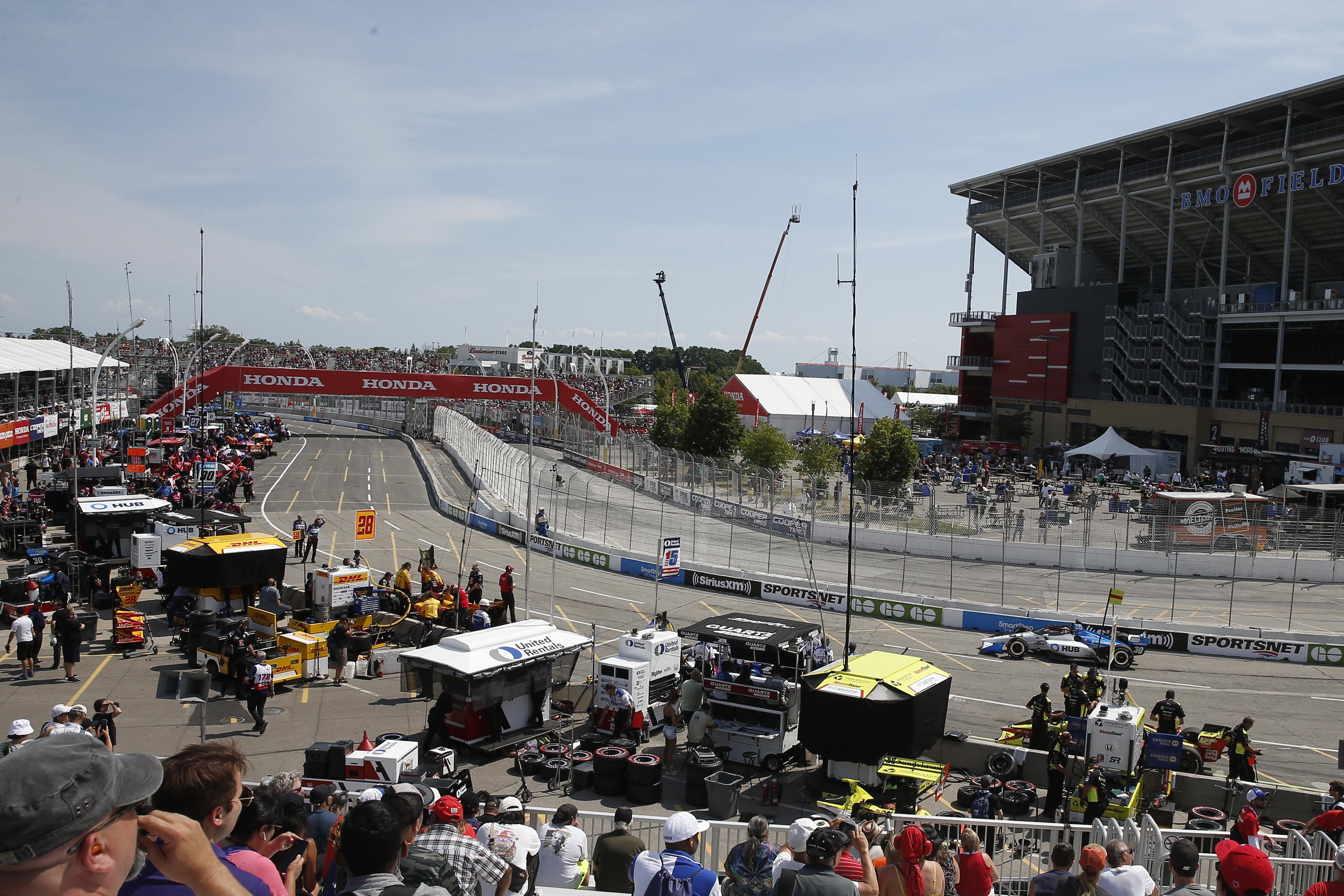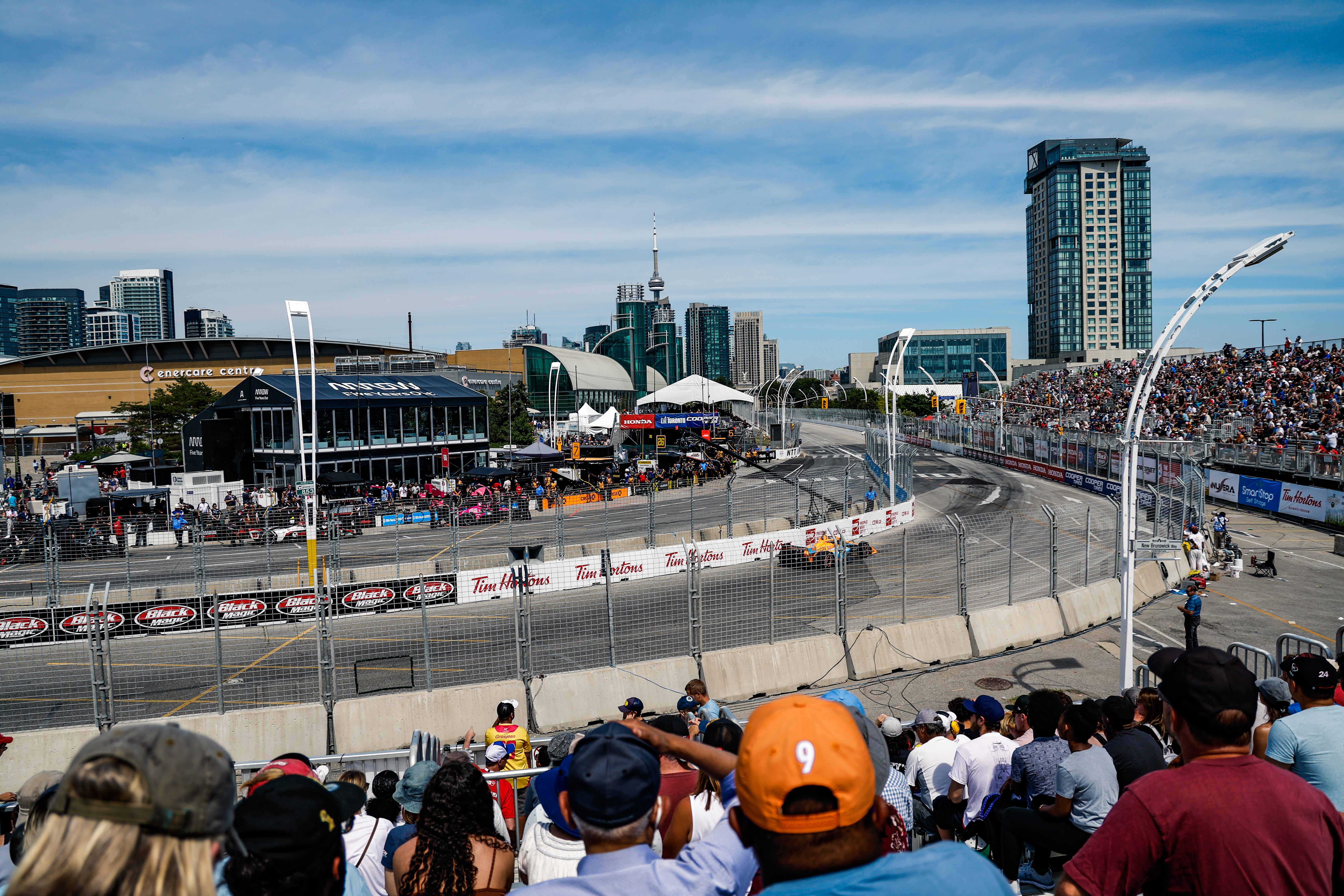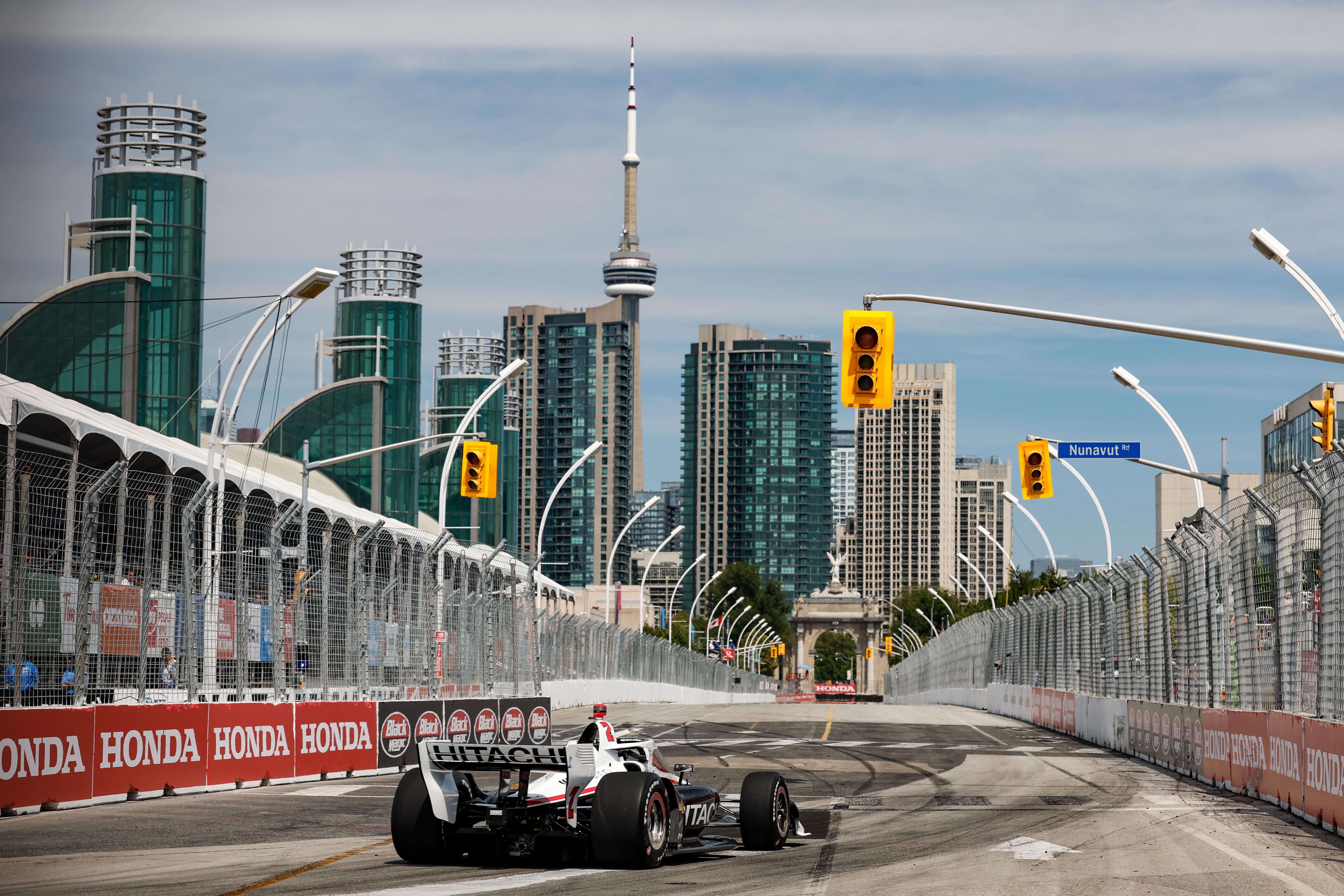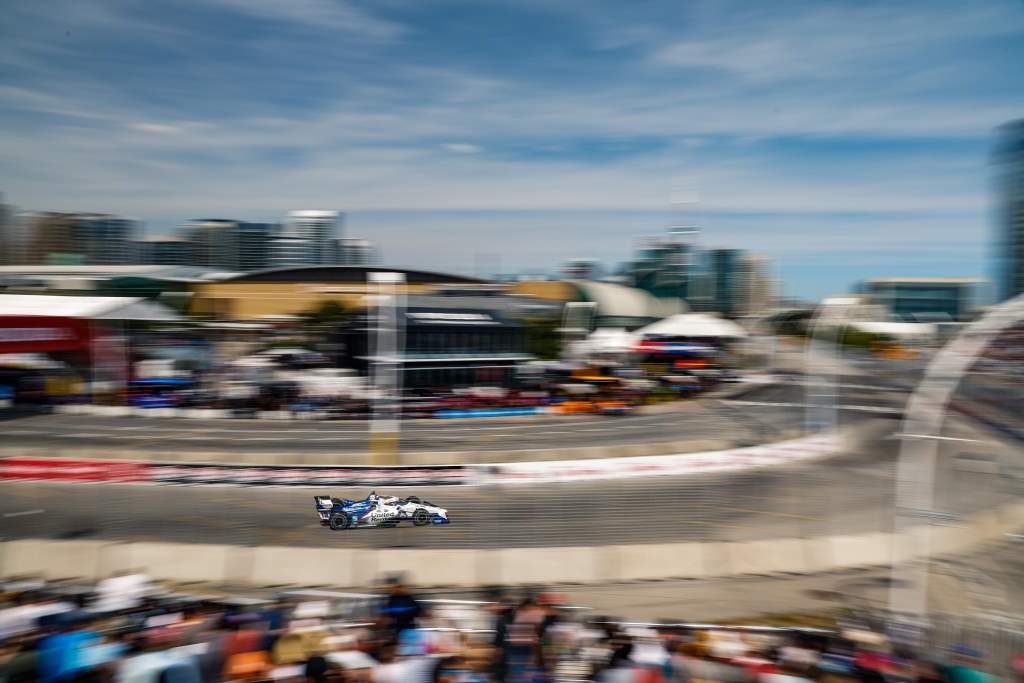The Race recently outlined how IndyCar faces a ‘growing pains’ problem, as the positivity of the potential for even more entries in the series is somewhat contradicted by Honda and Chevrolet being unlikely and even unable to supply many more entries.
That’s not Honda or Chevrolet’s fault, there are parts shortages and having enough of the personnel who are able to operate to their standards available playing into that. It’s not a decision brought about through stubbornness.
That feature didn’t mention an intrinsically linked problem which has reared its head again this weekend in Toronto: the size of the pits at many tracks.
Circuits like Laguna Seca – which admittedly is planning to make facility upgrades in the near future – and Mid-Ohio are near maximum capacity already and the pitlane at this weekend’s Canadian venue is far from perfect even with a slightly lower than usual 25-car entry.
It was relocated from the infield side of the start/finish straight to the outside of the final S-bends due to the construction of a new hotel in 2016. Now it curves right then left and the pit boxes – while they aren’t the smallest in the series – leave something to be desired.

“I can’t even see my timing stand it’s pushed back so far,” said Graham Rahal, one of the series’ longest serving drivers, having made his debut in Champ Car in 2007.
“I would just say the growth trajectory of the series for next year, too… I hope they’re getting ahead of it now because this isn’t acceptable really.
“It’s OK, we’ll get through, but it’s pretty dangerous with the guys and the pitstops and things like that.
“I hope for next year there’s a bit of a rethink about the way that we do this.”
Alexander Rossi – fastest in first practice on Friday, two places ahead of Rahal – added: “It’s hard. It’s a double-edged sword, right?
“You want to have a big field and you want to have as much health in the series as possible. But there is also the other side of it.
“I mean, logistically it’s very, very challenging at places. This is certainly one of them. We’re technically a car down from where we should have been [because Tatiana Calderon’s AJ Foyt entry was pulled over funding issues].
“It’s a lot of work. It’s a lot of work for the crews, as well. They can’t even get set up because they have a movable wall.
“They’re doing the best they can with the situation. It’s tough.”
The pitlane change also meant a further tightening of the final esses, which had been significantly slowed for safety reasons in 1996, and the IndyCar paddock (previously on the site now occupied by the new hotel) shifting locations until it reached its current spot on the outside of the circuit near the startline.

“I think also the track was significantly more fun the other way,” Rahal said.
“Not even close. Yeah, I’m not going to sugarcoat it. I wish we could go back tomorrow and run the old track. I understand there are challenges there.
“I also think the construction of the hotel has come to a close. I get there’s a little park or some more grass that’s come into play over there.
“But I hope for the health of this race – which clearly has a massive draw in town and nationally – that we can do the things necessary to get back to that.
“I don’t know all of what’s going on inside the track [on the infield]. When the transporters were there and everything, it just seemed a little more alive for us. The track was much more enjoyable to drive, so… I’d like to see it back.”
Josef Newgarden also fondly remembers when the pitlane was on the right instead of the left of the track.

“Obviously the promoter had their hands tied,” he says.
“This is not a knock on what they did. They had to do what they had to do to keep the event alive.
“The older set-up was much better. If there’s a way we can move it back to the other side, it’s definitely preferred.
“They’re going to have to do something at this point. We’re talking about the marketplace, the health of the series.”
And Newgarden’s point isn’t just about the Toronto atmosphere. This year’s regular 25-to-27-car entries are set to rise for 2023 with Arrow McLaren SP definitely expanding from two to three full-time cars, Paretta Autosport working on stepping up to a full-season programme, Juncos Hollinger keen to have a second car, Indianapolis 500 entrant Cusick Motorsport looking to do more, Dale Coyne Racing having a third car it’s not currently using and its ex-partner Vasser Sullivan looking for a way back onto the grid too.
“I think car count is going to be an issue when you look at this pitlane next year,” said Newgarden.
“There’s going to be some solution that has to be found. I’m sure they will because the health of the series is strong.
“Today, it looked like a race day crowd out there when we were practicing. It’s fantastic to see the fans here in Toronto.
“The Canadian fans are some of the most passionate we have in IndyCar racing. We have to protect that. We all love coming here. There’s no doubt that we will find a solution.”
During the press conference IndyCar’s Kate Davis confirmed the series president Jay Frye had discussed the issue and “they’re working on it”.
Expanding or changing pits always presents a logistical and cost issue.
But, if the field expands as expected, next year is going to be a problem for some tracks.
It’s good to hear IndyCar is on the case because 2023 will arrive quickly.






